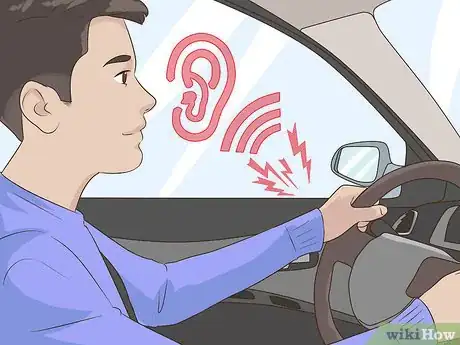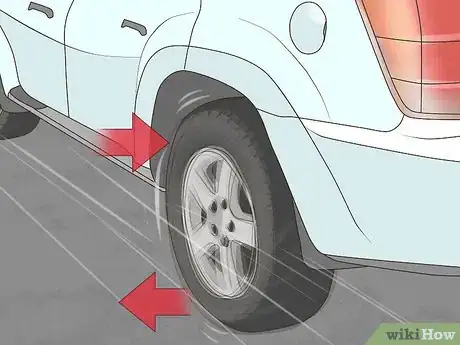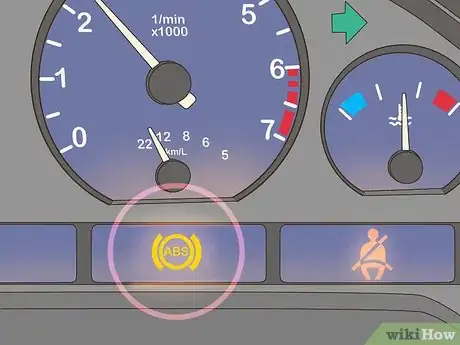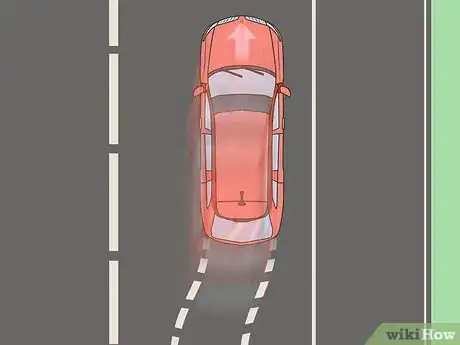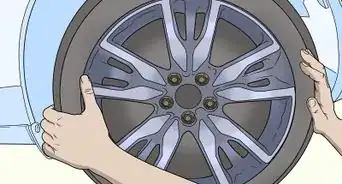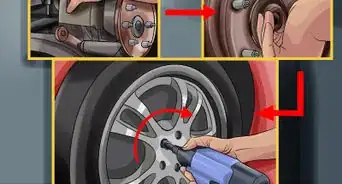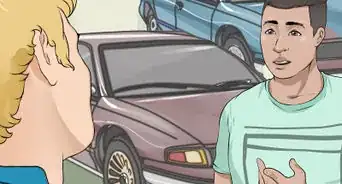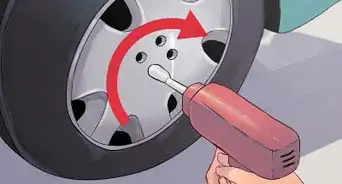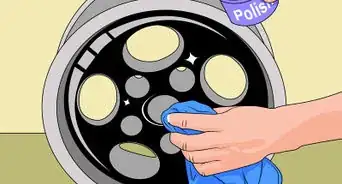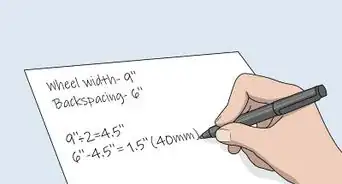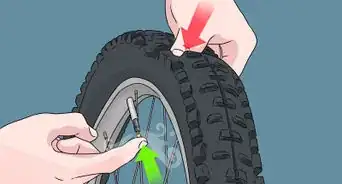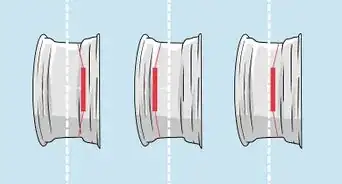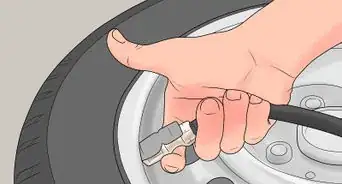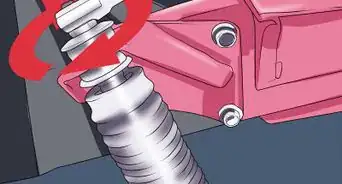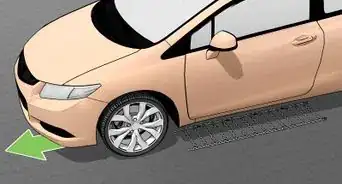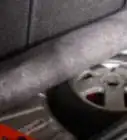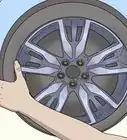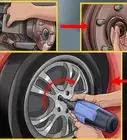This article was co-authored by wikiHow Staff. Our trained team of editors and researchers validate articles for accuracy and comprehensiveness. wikiHow's Content Management Team carefully monitors the work from our editorial staff to ensure that each article is backed by trusted research and meets our high quality standards.
There are 9 references cited in this article, which can be found at the bottom of the page.
This article has been viewed 128,034 times.
Learn more...
Wheel bearings are metal balls held by a ring and allow the wheel on your vehicle to spin with as little friction as possible. Over time, bearings can break down due to a lack of lubrication and typical wear and tear. Driving on a bad wheel bearing can be dangerous, and could cause severe damage to your vehicle if you continue to drive on it. Luckily, diagnosing a failing wheel bearing is relatively easy and you can usually determine if there's a problem by listening to your wheels and evaluating any changes in your car's handling.
Steps
Listening to Your Wheels
-
1Listen for snapping or popping when you turn. Snapping, popping, and clicking are all signs that the outer CV joint, which is the joint that connects your wheel to the axle, is starting to wear out. Sometimes, more severe turns will create a louder snapping or popping noise. If you hear this while you're driving, there's a good chance you have a bad axle.[1]
- Listen to what side the rattling is on, so you have an idea of which wheel bearing is going bad.
-
2Listen for grinding, dragging, or roaring while you drive. When driving, worn out wheel bearings will sometimes sound like a break pad grinding or dragging. The longer you drive, the louder the grinding will sound. Drive down the road at 40 mph (17.8 mps) and listen for any grinding that you hear coming from your wheels.[2]Advertisement
-
3See if the buzzing sound changes as you change speeds. A common sign of a worn bearing is if the sound that's coming from your wheel changes as you accelerate or decelerate. If you already hear a buzzing or snapping sound, see if it gets more or less intense the faster you go. If the sound varies depending on how fast you're going, there's a good chance there's an issue with your wheel bearings.[3]
Recognizing Other Symptoms
-
1Feel your steering wheel to determine if it's vibrating. If you're driving and your steering wheel is wobbling or vibrating, it's a good sign you may need to replace your bearings. When bearings break down, it can make your car feel "loose," which results in poor handling and a vibrating or wobbling steering wheel.[4]
-
2Pay attention to whether your wheels wobble. As you drive at higher speeds, your wheels may start to wobble from side to side. This is a sign that your bearings are going bad. Unfortunately, wobbling wheels are usually a sign of significant bearing damage, so you should stop driving and get them replaced immediately if this is the case.[5]
-
3See if your ABS light comes on. Cars with an anti-lock brake system will often have an indicator light on their dashboard. If this light comes on, there's a possibility it could be because of bad bearings. See if there are any additional symptoms to determine if it's your wheel bearings or a different part of your brake and suspension system.[6]
-
4Determine if your car drifts to one side. If your vehicle has a tendency to drift to one side when you're driving, the bearings may be bad. Drive down a straight road at a moderate speed and feel if the wheel is automatically turning to one side without you controlling it.[7]
- This symptom alone isn't a great indicator of bad wheel bearings because it can be caused by a multitude of other wheel alignment problems.
Evaluating Bearing Damage
-
1Lift your car using a jack. Read your owner's manual to learn where the jack points are on your car are. Position the jack near the wheel that you suspect has a bad bearing and jack up your car so that the wheel clears the road.[8]
- Make sure that you take the proper precautions when using a jack so that your car doesn't accidentally fall and injure you.
-
2Wiggle the wheel back and forth to see if there is any movement. Push and pull on the wheel back and forth to feel if there's any give.[9] If you can push the wheel back and forth, this is a sign of significant bearing damage. Get your bearings replaced immediately if your wheels wobble as you drive.[10]
-
3Spin the wheel and listen for a rattling sound. If you suspect a back wheel has a bad bearing, put your hand on the wheel and spin it as fast as you can. If the bearing is bad, it's likely it will make a rattling noise as you turn it. While it's not as severe as a wobbling wheel, rattling wheel bearings should be replaced as soon as possible.[11]
- The longer that you drive on a damaged wheel bearing, the worse the damage will get over time.
-
4Take your car to a professional. If you're still unsure but suspect that there is something wrong with your wheel bearings, you should take it to a certified mechanic so that they can properly diagnose the problem.
Community Q&A
-
QuestionWill the hubs be hot?
 Community AnswerThey could potentially get very hot, but by that stage you'd know something was wrong. The noise coming from it would be very annoying and loud.
Community AnswerThey could potentially get very hot, but by that stage you'd know something was wrong. The noise coming from it would be very annoying and loud. -
QuestionCar making a flat tire sound on the left side but there is no flat tire, why?
 Uglymug18Community AnswerThis is most likely caused by a bad wheel bearing or a bad CV joint. Unless, of course, you actually have a flat tire or broken belt.
Uglymug18Community AnswerThis is most likely caused by a bad wheel bearing or a bad CV joint. Unless, of course, you actually have a flat tire or broken belt. -
QuestionI have low growling noises sounds from the back that get louder the faster I go. One mechanic said change back tires, but the tires are good and have no wear. Another mechanic said he'd have to take it apart to see. What should I do?
 Community AnswerIt could just be the tires; just so you know, tread wear is not the only thing that affects your tires. But it could be something more serious, too. Go to a mechanic willing to look into the issue; the second mechanic mentioned seems like he'd be a good candidate.
Community AnswerIt could just be the tires; just so you know, tread wear is not the only thing that affects your tires. But it could be something more serious, too. Go to a mechanic willing to look into the issue; the second mechanic mentioned seems like he'd be a good candidate.
Things You'll Need
- Car jack
References
- ↑ https://www.knowyourparts.com/technical-resources/quality-mattershubs-bearings/symptoms-of-a-worn-wheel-hub-bearing/
- ↑ https://gobdp.com/blog/bad-wheel-bearing/
- ↑ https://www.thoughtco.com/bad-wheel-bearing-signs-281968
- ↑ http://www.simple-car-answers.com/Car-Shakes.html
- ↑ http://www.simple-car-answers.com/Car-Shakes.html
- ↑ https://mibearings.com/page_2
- ↑ https://www.meineke.com/blog/wheel-bearing-warning-signs/
- ↑ http://www.military.com/off-duty/autos/how-to-use-a-jack.html
- ↑ https://www.youtube.com/watch?v=_hId3Dx2H_4&feature=youtu.be&t=35s
About This Article
To know if the wheel bearings in your car are going bad, listen for snapping, popping, or clicking sounds when you turn. These sounds are all signs that the joint connecting your wheel to your axel is starting to wear out. Notice if the sound coming from your wheel is changing as you change your speed, and notice if you feel your steering wheel vibrating when you drive. If you feel your wheels wobbling while you drive, you should stop driving immediately, since this is a sign of severe bearing damage. To find out how to evaluate your bearing damage, keep reading!

